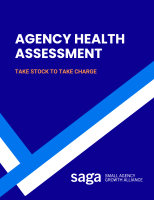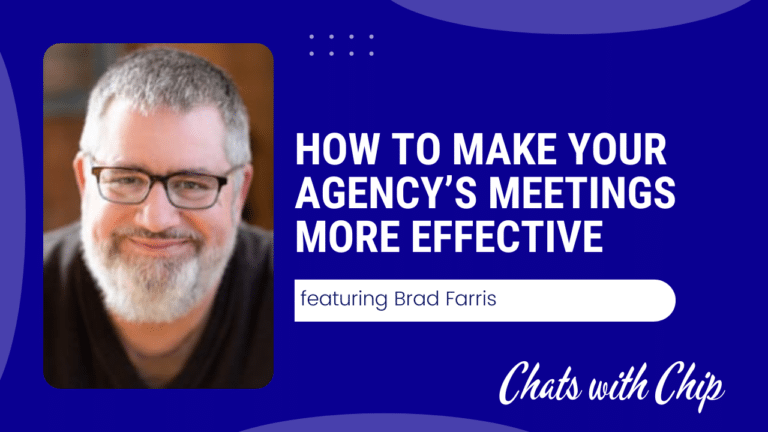Technology solutions for agencies — like most businesses — have undergone a major transformation over the past couple of decades.
The movement to the cloud instead of desktop- and server-installed software has provided incredible advantages, but it doesn’t come without a price.
Software as a Service (Saas) solutions mean that even small agencies have access to sophisticated tools without the high upfront costs and significant ongoing staffing requirements for maintenance and support.
It also delivers constant improvements, ensuring that agencies don’t get left behind as more deep-pocketed competitors upgrade to the latest versions while the upstarts eke out one more year on an older edition, as was often the case in the past.
While this movement has really helped level the playing field and make agency employees more efficient, it has the potential to serve as a major cost sink if not managed correctly.
The challenge comes about for several reasons:
- Agencies wait longer to hire IT staff and have much smaller IT teams than in the past when software was in-house.
- Since SaaS solutions exist online, it is simple for individual employees to sign up for tools without needing to work through any kind of IT process (even if such a department exists at the agency).
- A constant attraction to shiny objects often leads agency teams to snap up new tools without evaluating overlap with existing solutions.
- Small monthly fees allow many tools to become impulse purchases, without regard to total combined costs.
So how does an agency address this challenge?
Track Software Expenses Properly
Like any kind of cost control exercise, containing the waste in software subscriptions requires agencies to accurately track the tools in use.
In the olden days of purchased software, it was common for businesses to maintain spreadsheets or databases of license keys, making it fairly simple to know what was installed on-premise.
It wasn’t perfect, but it did the trick.
Today, most agencies can’t tell you all the software that they use across the business.
To get close, they will go to the bookkeeper or finance team to produce a list of expenses for software subscriptions — which often requires a bit of forensic accounting work since it is not uncommon for these expenses to get split up between standard line items like “Subscriptions” and “Software.”
This list isn’t all that useful, though, because it usually is focused on vendor names (which often don’t match product names) and almost never provide immediate clarity on what the tool does (even in broad terms).
Worse, this kind of reporting doesn’t make it easy to see what the renewal terms are for any SaaS solution — monthly, quarterly, annual?
When agency management first looks at a list like this, it can be very confusing.
But it’s the place to start and the finance team needs to ensure that the data is being tracked properly and consistently.
Creating a “SaaS” expense line item in the books can be a helpful way to ensure the costs don’t get split over a couple of categories as everyone tries to guess where to put it.
Audit Software Subscriptions Regularly
Once you get a list, the next step is to audit all of the subscriptions.
Here’s what you need to be looking at:
- How many tools do you have that do the same (or nearly the same) thing?
- Is there good reason for any overlap or is it just because some team likes one tool better than another?
- Are all of the tools actually being used?
- Are all of the user licenses you’re paying for actually needed?
- If multiple teams are using the same tool, are you getting appropriate volume discounts? Or does each team have separate subscriptions?
- Since technology changes regularly, are you sure you have the right tools for the job you’re doing today?
Most agencies are shocked at how many tools they are paying for that are underused or not used at all.
When software was a one-time purchase, this happened, too, but there was also nobody asking to buy the latest version if it had fallen into disuse.
But with ongoing monthly payments on a credit card that may not be monitored as closely as it should, it is easy for a business to keep paying for something (often for months or years) that is not being utilized.
The reasons for underuse vary:
- Employees leave but the number of users being paid for doesn’t get updated.
- A shiny new object replaces the old tool, but nobody remembers to stop the service.
- The best of intentions at the time of the original subscription don’t match up with the reality of day-to-day use (this often happens with productivity apps like time trackers).
- Client needs change, but nobody remembers to update the tools to match.
Proactively looking at software subscriptions and usage on a regular basis will pay substantial dividends for most agencies.
Establish Agency Software Standards to Avoid “Everyone for Themselves” Confusion
Beyond the audit, agencies also need to look at establishing some standard tools to become more efficient and improve profitability.
Agency employees resist software standards. Everyone seems to have their favorite tool for getting a job done.
Frankly, the same thing happens with hardware, too, with most agencies having a mix of Apple, Android, and Windows tools. But this article is about software, so we’ll leave the hardware challenges to another day.
While bureaucracy sucks and the requirement to be agile drives many SaaS purchases for agencies, there needs to be some structure to ensure there’s not a lot of wasted technology spending.
Establishing standards, isn’t just about saving on subscription fees.
If you have standard tools at your agency, you will see multiple benefits:
- Fewer SaaS solutions simplifies employee training.
- Consistent tools enable the creation of more repeatable processes to make teams more efficient.
- Shared learning improves when everyone is using the same software, meaning clients get better results.
- Audits are easier when there’s a process in place to select the tools.
You don’t want to take away the ability of teams to respond quickly to client needs and technology improvements, but if you have no process in place you will constantly find yourself on the losing end of wasted subscriptions.
If your agency tracks spending, audits usage, and establishes standards for software, you will get the benefits of technology — without letting it erode your bottom line.











